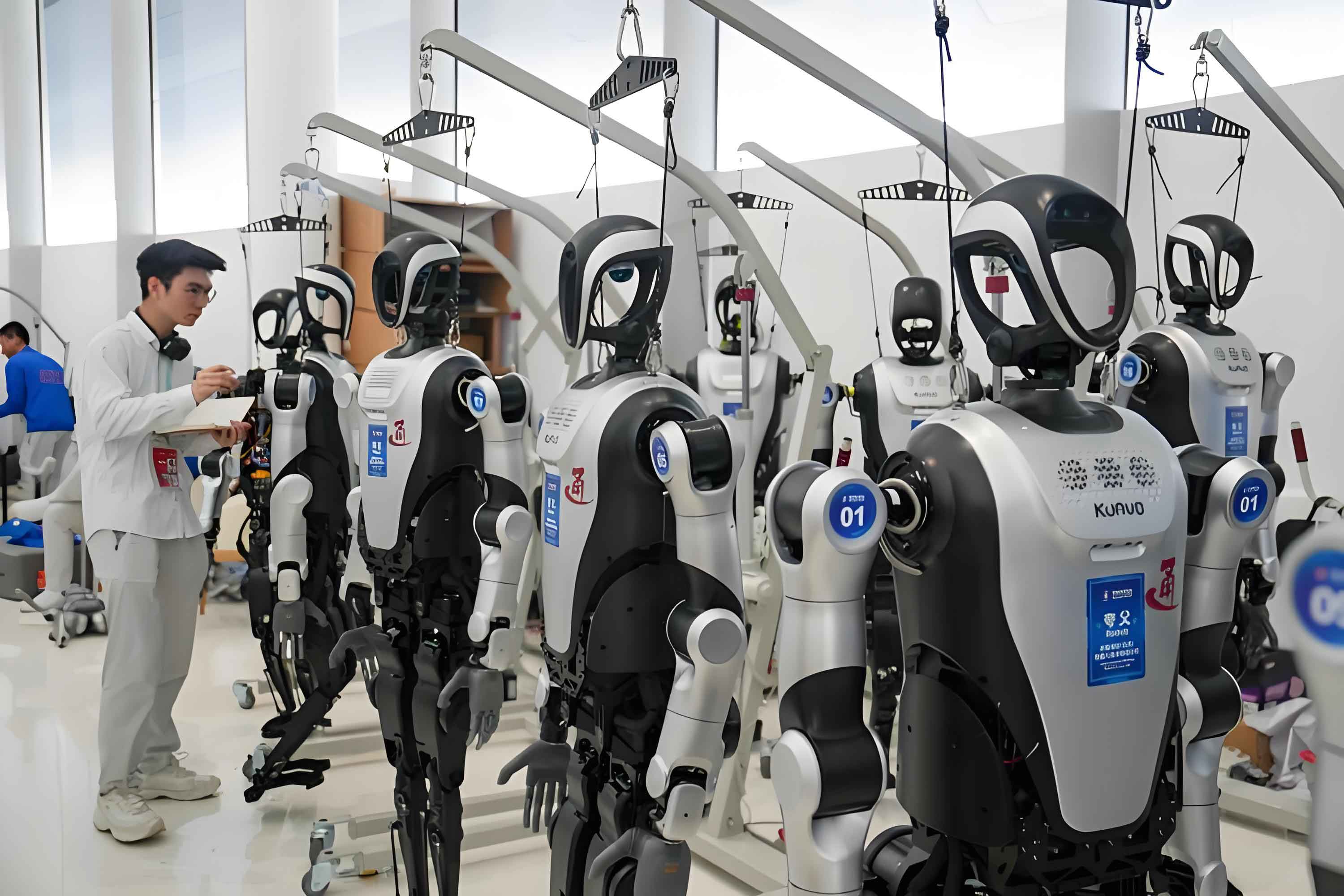The roar wasn’t for human athletes, but for humanoid robots slotting a goal during a dynamic football match. This scene, unfolding at Shanghai’s 2025 Humanoid Robot Ecosystem Conference, crystallized the surging energy surrounding an industry poised for explosive growth. Crowds three-deep surrounded demonstration zones, not just for the novelty, but driven by palpable anticipation of these machines transitioning from lab curiosities to indispensable partners. The message was clear: The era of the humanoid robot is accelerating, but unlocking its vast potential hinges on conquering real-world application scenarios.

“General-purpose humanoid robot products will formally enter the market sequence by 2026,” declared Jiang Lei, Chief Scientist at the National-Local Collaborative Innovation Center for Humanoid Robots, cutting through the conference buzz. His projection hinges on a critical threshold: 100,000 units produced or sold globally within that timeframe. This volume, he contends, signifies the point where the humanoid robot transcends niche applications, evolving into a versatile tool adaptable across diverse environments. The implications are profound – moving beyond controlled settings into the unpredictable fabric of daily life and work.
The conference floor buzzed not just with spectators, but with serious commercial intent. Hoteliers inquired about procurement; manufacturing executives probed algorithmic compatibility; logistics firms assessed mobility. “Our current lead time is about one month, or you can order directly via our e-commerce platform,” a Unitree Robotics representative informed a client discussing bulk purchasing – a testament to nascent, yet growing, commercial traction for humanoid robot platforms. Beyond the complete systems, the ecosystem’s backbone was on full display. Component suppliers showcasing advanced robotic vision systems, dexterous manipulators (“hands”), and specialized AI chips drew equal attention from investors scouting opportunities and engineers seeking integration pathways.
This surging demand, however, strains current capabilities. “Since Unitree’s systems gained prominence, market enthusiasm has soared unprecedentedly. Consumer interest is accelerating the entire industry’s shipment timelines,” revealed a representative from Accelerated Evolution Technology, the firm behind the conference’s headline football match. “Frankly, our current production capacity cannot fully meet the demands of both domestic and international markets.” This bottleneck underscores the gap between burgeoning interest and industrial scalability.
Accelerated Evolution’s strategic focus – football – is far from frivolous. It represents a deliberate, high-stakes proving ground for core humanoid robot competencies. “Mastering football demands three critical attributes,” their spokesperson elaborated. “First, extreme durability and stability – the humanoid robot must withstand hard falls and intense physical interaction. Second, exceptional lightness and agility for complex maneuvers like powerful kicks and rapid recoveries. Third, sophisticated AI for autonomous, real-time decision-making in chaotic, dynamic environments.” Success here isn’t about creating soccer stars; it’s about pressure-testing the fundamental robustness, mobility, and intelligence required for the humanoid robot to function reliably in countless unpredictable future scenarios. If a humanoid robot can navigate the controlled chaos of a football pitch, the argument goes, its path to warehouses, disaster sites, or elder care facilities becomes significantly smoother.
Yet, the path forward is strewn with significant technical hurdles acknowledged even by the industry’s staunchest advocates. “Current application scenarios for the humanoid robot remain distinctly limited,” conceded one manufacturer, requesting anonymity. True progress, they stressed, depends on relentless technological advancement to enhance performance and enable genuine versatility. Xiong Youjun, CEO of the National-Local Collaborative Innovation Center for Intelligent Robots (Beijing), provided a sobering technical assessment: “Multidimensional bottlenecks persist, notably poor scenario generalization.” Today’s sophisticated humanoid robot, he explained, excels in controlled, structured settings but falters dramatically when faced with dynamic, open, or entirely unknown environments. Their operation remains heavily reliant on pre-programmed conditions and workflows, lacking the adaptive intelligence for true real-world unpredictability.
Xiong highlighted another critical constraint: the lack of algorithmic universality. “Current intelligent algorithms are typically optimized for specific humanoid robot hardware,” he noted. “Cross-platform compatibility is poor. Deploying an algorithm onto a new humanoid robot platform necessitates extensive recalibration, parameter tuning, and hardware-specific adaptation. This lack of plug-and-play capability severely hampers rapid deployment across diverse humanoid robot systems and stifles application efficiency.” This siloed development approach slows innovation and increases costs.
While the industrial sector, particularly manufacturing and logistics automation, is widely tipped to be the first major adopter of the humanoid robot due to its more structured environments, industry insiders and observers consistently point towards the service sector as the ultimate prize. The potential applications – healthcare assistance, eldercare support, retail, hospitality, and domestic help – represent a market of staggering scale, demanding precisely the kind of safe, adaptive, and dexterous interaction that defines the humanoid robot ambition. Reaching this potential requires overcoming the very adaptability and interaction challenges currently being tackled through testbeds like robotic football.
Market analysts echo the conference’s forward momentum, declaring 2025 the “first year of mass production” for the humanoid robot industry, driven by rapid advancements across the supply chain and accelerating commercialization pilots. The excitement in Shanghai was tangible, fueled by dazzling demonstrations and bullish forecasts. Yet, beneath the spectacle lies a complex, multi-year engineering marathon. The race isn’t merely to build a humanoid robot; it’s to forge a machine capable of reliably navigating the beautiful, messy complexity of the human world. The football match was more than a game; it was a high-profile scrimmage in the humanoid robot‘s long journey towards ubiquity. The final whistle on true mainstream adoption hinges on solving the intricate puzzle of real-world utility, one resilient, agile, and intelligent step at a time. The industry is sprinting, but the marathon is far from over.
